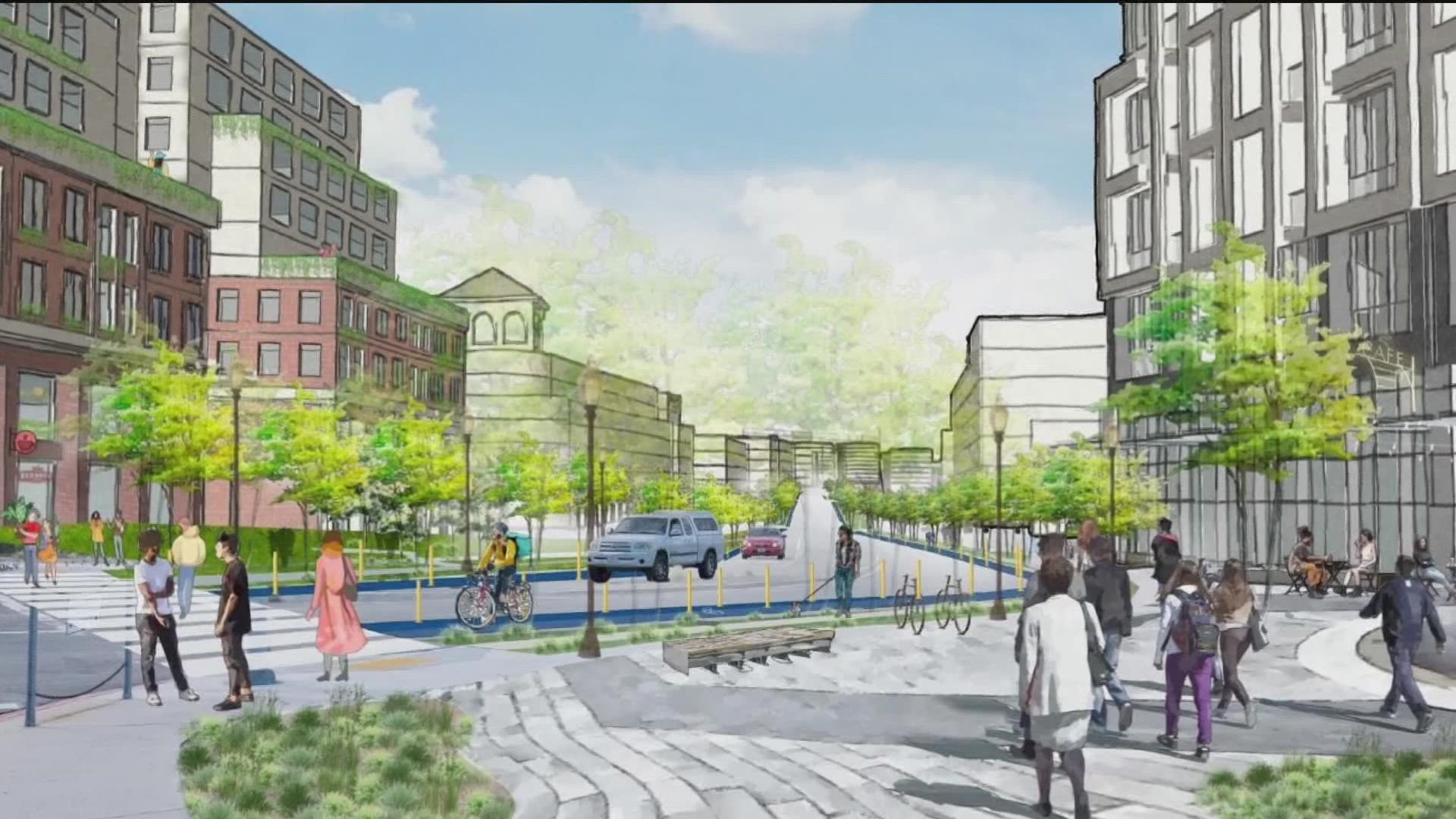SAN DIEGO — Some neighbors in the College area are frustrated by what the City of San Diego is proposing for their neighborhoods.
“I’m frustrated. I’m sad. I’m angry,” said Danna Givot. “I’m all of the above.”
Givot has lived on 59th Street near Adams Avenue for nearly four years, and she enjoys living there.
“These are all my neighbors,” said Givot while pointing across the street. “These people have been here twenty-some odd years and raised their family here.”
Givot and many of her neighbors are upset about the city’s proposal to change the zoning in the area to allow for more density and housing to be built.
“It would be very sad and I don’t know that I would stick around and wait to see myself surrounded by 3-5 story apartment buildings or townhouses because that’s not what I bought into,” said Givot.
City planners have been involved with a community plan update for the College area over the past couple years, and more recently, they released some draft proposals that spell major changes for single-family neighborhoods.
“We need to continue to transform our communities but it shouldn’t just be, ‘Do whatever you want, wherever you want,’” said Geoffrey Hueter, Chair of Neighbors for a Better San Diego. “The point of the planning process is to guide where development makes the most sense.”
They believe any up-zoning belongs on the major corridors such as El Cajon Boulevard or Montezuma Road, but not in their quiet neighborhoods.
“Rather than trying to demonize homeowners, bring everybody into the table and let’s have a discussion,” said Hueter. “I think that if the city could present the needs that it has, I think homeowners would get engaged in a constructive way and be a part of the solution.”
When this planning process started, the only available data for population and housing needs over the next 30 years was from SANDAG projections made in 2013. Those numbers were much larger than the more recent data released by SANDAG last year, which shows smaller population growth.
“We don’t have to plan for a 95% increase in population, only a 35% increase in population so these plans need to be rolled back,” said Givot.
CBS 8 contacted the City’s Planning Department about the data discrepancy and they responded with the following statement:
“The SANDAG Series 13 Forecast for housing and population was the most current available forecast data when the City started the College Area Community Plan Update. The Series 13 Forecast provides data at the community plan area for the College Area. The SANDAG Series 14 Forecast was approved by the SANDAG Board in December 2021 at the jurisdictional level, but SANDAG had not yet released the Series 14 Forecast by community plan area for the City of San Diego when the City released the “Choose Your Future College Area!” survey. Moving forward, consistent with standard practice, City staff will use the most currently available data, which now includes Series 14, as part of the community plan update.”
San Diego’s Planning Department sent CBS 8 the following statement about the importance of planning for more housing capacity:
“Planning for more homes has never been more critical, and it matters where these homes are located. People need homes in areas where it is easy to get around by walking, biking, transit or car. It’s also important these areas have quality public spaces, schools and jobs. We know people are struggling to find affordable places to live and call home. These people are our children, our parents, our friends and our neighbors. Planning for more homes does not always result in more homes, but it is a necessary step in the right direction.”
Meanwhile, neighbors in the College area just want to feel like their voice is heard too.
“I think the problem is the city just comes in and says, ‘You guys are NIMBY and we’re just going to cram this on top of you,’ you know,” said Hueter. “There’s no tradeoff there.”
WATCH RELATED: College Area upzoning plan sparks debate (May 2022).

